Allow us a moment of bias but we genuinely believe this is the epitome of an effortless biscuit base lemon meringue pie recipe.
No more pastry tantrums. This no-bake crust will save you from the drama of mixing, chilling and blind-baking a shortcrust pastry base. Instead, this is a quick and easy kickoff to a beautiful dessert.
For the lemon filling, we enlist condensed milk for a touch of velvety creaminess, a departure from the traditional lemon curd-style fillings that demand meticulous stove-top manoeuvres with yolks and flour. None of that fuss here - just a quick mix and into the oven it goes.
And the pièce de résistance! A billowy, marshmallowy cloud of Swiss meringue, bypassing the pitfalls of baked meringue that often starts weeping and beading after a few hours. Or raw-egg white meringue, of which we have never been fans.
The lemon flavour is balanced and not overly tart, ensuring a Lemon Meringue Pie that appeals to many palates.

Jump to:
What's to love about this recipe
- Effortless, buttery biscuit base - no fuss, no baking hassles.
- The filling is made with condensed milk, lending it a creamier touch compared to the more lemon-curd-style fillings.
- We top it off with Swiss meringue, avoiding the use of baked or raw-egg white meringue. Plus, no weeping or beading.
- The lemon flavour in this recipe is spot-on. It's not overly tart, ensuring a Lemon Meringue Pie that appeals to many.
Key ingredient notes and substitutions
**Please see the recipe card at the bottom of this post for the full list of ingredients.

The biscuits
For this simple tart base, any plain cookies work perfectly, like digestive biscuits, Graham crackers or Marie biscuits.
Some fantastic alternatives are buttery Scottish shortbreads or the spicy kick of ginger nut biscuits.
Lemons
You'll need 120ml (half a US cup) of freshly squeezed lemon juice. Lemon sizes vary, but typically, you'll need roughly 3-4 medium-sized lemons for this amount of juice.
Please spare your tart from the injustice of bottled lemon juice. That stuff should be in flavour jail. It's so soul-crushingly wrong. Freshly squeezed lemons deserve the only starring role here.
You'll also need the zest from one lemon (based on a medium-sized lemon). Again, lemons, being the diverse bunch they are, may vary in size. Aim for the zest equivalent of about a heaped, loosely packed teaspoon.
Before you joyfully squeeze those lemons, don't forget to zest one! It's an easy step to forget.
Condensed milk
Condensed milk in a lemon meringue filling is our absolute favourite type of pie!
Firstly, it's a breeze to whip up compared to the meticulous effort required for an egg and flour filling.
Secondly, that creaminess! The condensed milk adds a richness often missed in the more traditional lemon meringue pies.
Depending on where you are in the world, cans of condensed milk may vary slightly in weight.
The difference is usually just a few grams (we use a 397g can and call it 400g in the recipe). As long as the weight is close enough to this range, a few grams over or under won't impact the recipe.
Eggs
You'll need four large eggs, whites and yolks separated.
Take extra care not to let any yolk slip into the egg whites, especially since we'll be whipping them up into a meringue.
Caster sugar
Caster sugar is perfect as it quickly dissolves into the Swiss meringue because it's finer.
However, regular white granulated sugar works too. Just expect a tad more patience as it dissolves into the egg whites.
Cream of tartar
Half a teaspoon of cream of tartar stabilises the meringue, maintaining structure and promoting a smooth, glossy texture. It enhances protein bonding for a stable and voluminous result.

Step-by-step instructions
- Preheat the oven to 180C/350F.
Make the biscuit base

- Add the biscuits into the bowl of a food processor bowl and whizz until you get fine crumbs. Alternatively, throw the biscuits into a sturdy plastic bag and give them a good bashing with a rolling pin.

- Melt the butter in the microwave or a small saucepan on the stove. Pour the melted butter over the biscuit crumbs or crushed biscuits and mix until well combined, ensuring all the crumbs are coated with butter.
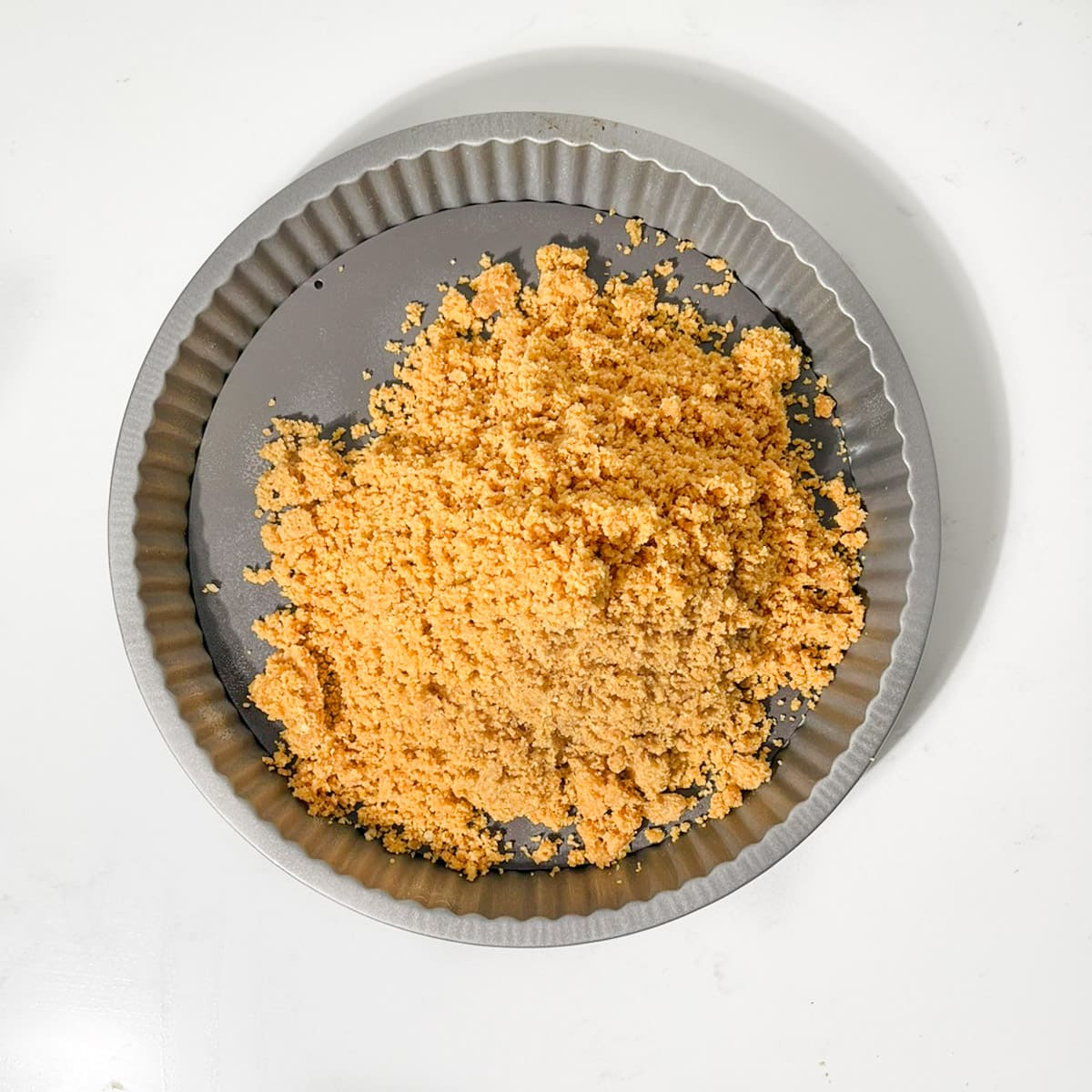
- Transfer the crumb mixture into a tart tin or pie dish, approximately 23cm/9" in diameter.
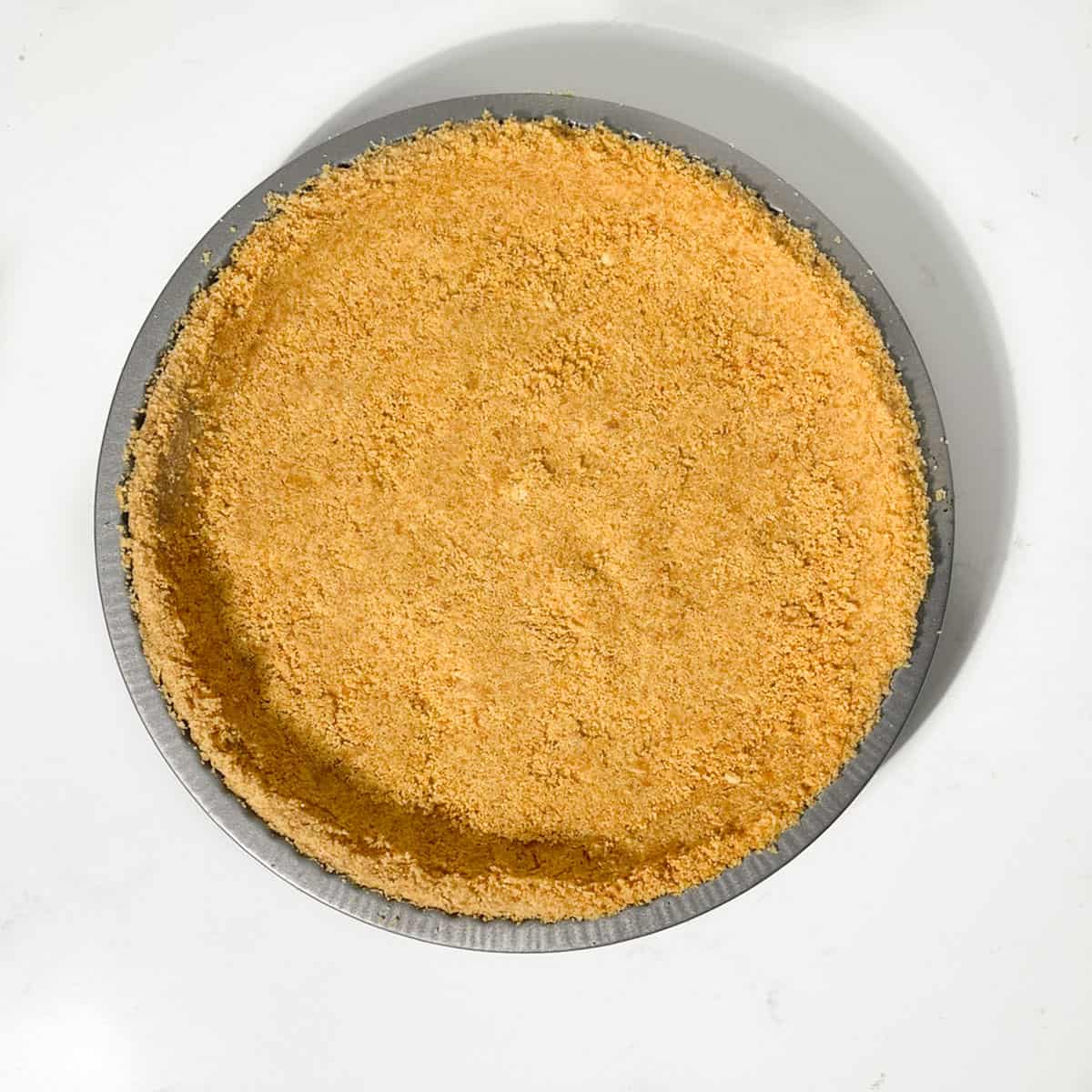
- Press the crumbs firmly into the dish, ensuring they cover the bottom and reach up the sides of the tin. Use the back of a spoon or the bottom of a glass to compact the crumbs firmly in the dish.
- Place the prepared tart base in the fridge until needed.
Make the lemon filling
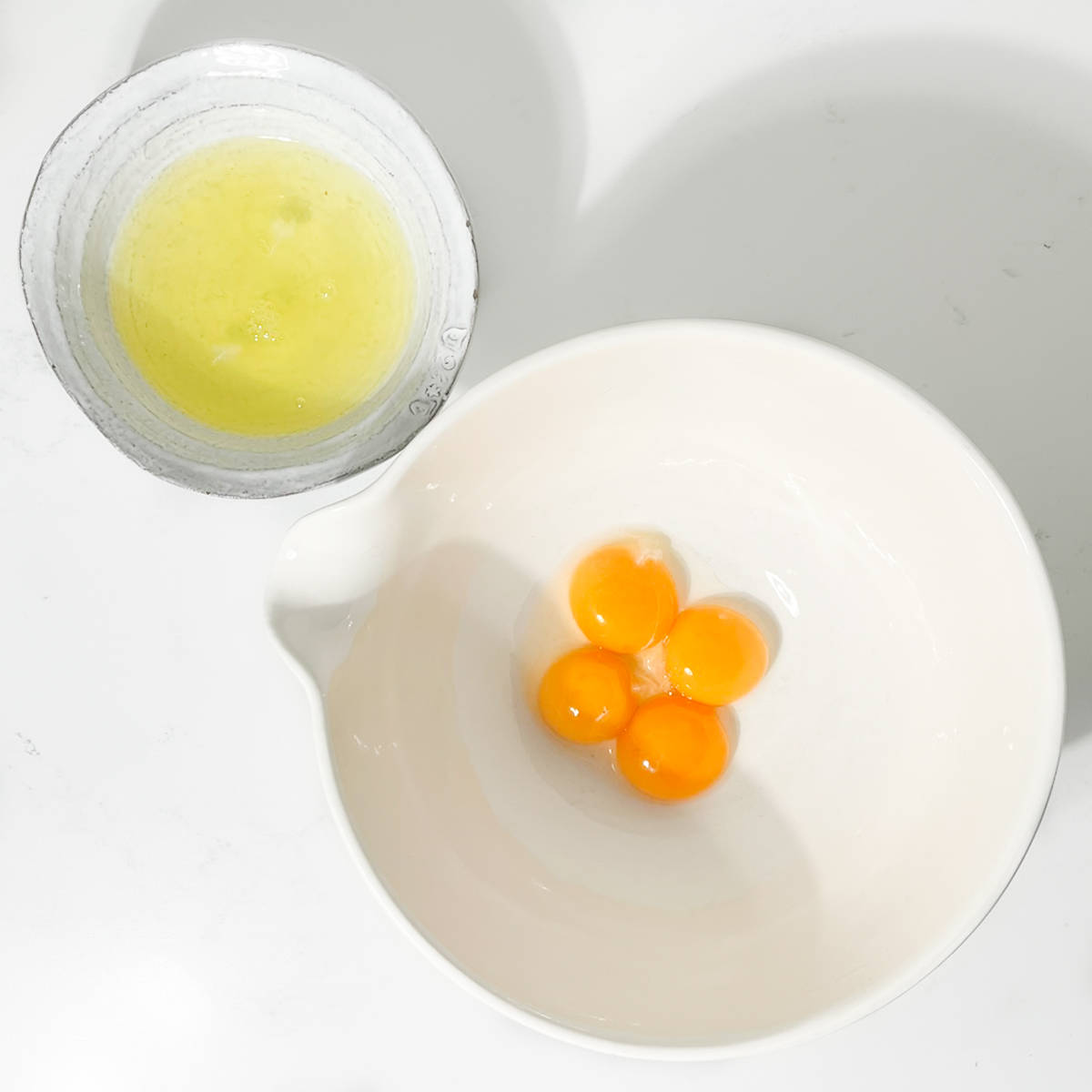
- Separate the room temperature eggs, being careful not to let any traces of egg yolk into the egg whites.
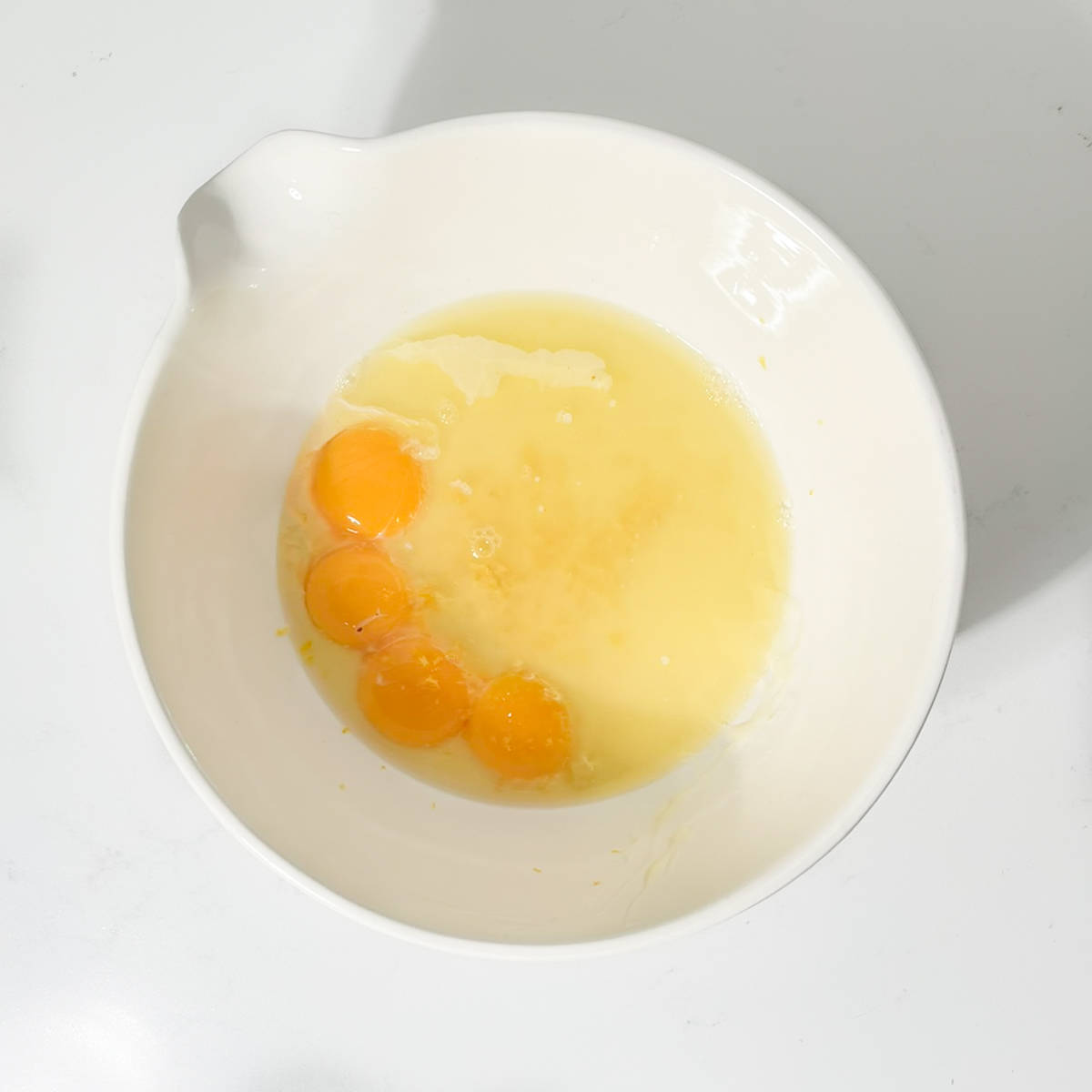
- In a large bowl, combine the egg yolks, condensed milk, lemon juice and lemon zest.

- Whisk the mixture thoroughly using an electric hand mixer or a hand whisk until fully incorporated, approximately 1-2 minutes. The condensed milk will slightly thicken due to the lemon juice.
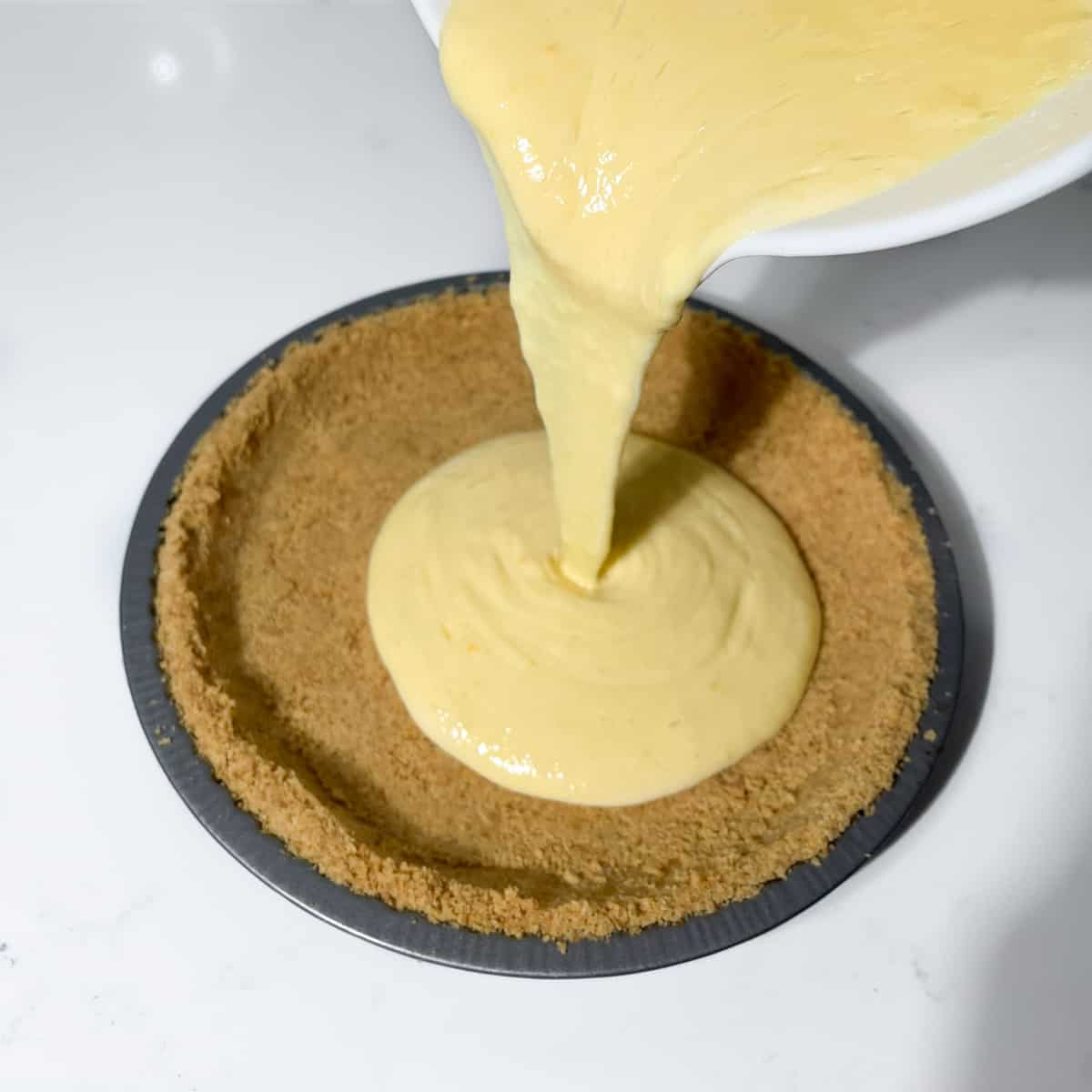
- Gently pour the tangy lemon filling onto the cookie base and tilt the tin from side to side to level it.

- Bake the pie in the preheated oven for 20-25 minutes, or until the sides are firm and there is only a very slight wobble in the middle.
Be careful not to underbake, as the tart may not set firm enough.
- Let the pie cool, then transfer it to the fridge to fully set and chill for at least 4-6 hours, or overnight.
Make the Swiss meringue topping

- Attach the whisk attachment to a stand mixer or an electric hand mixer.
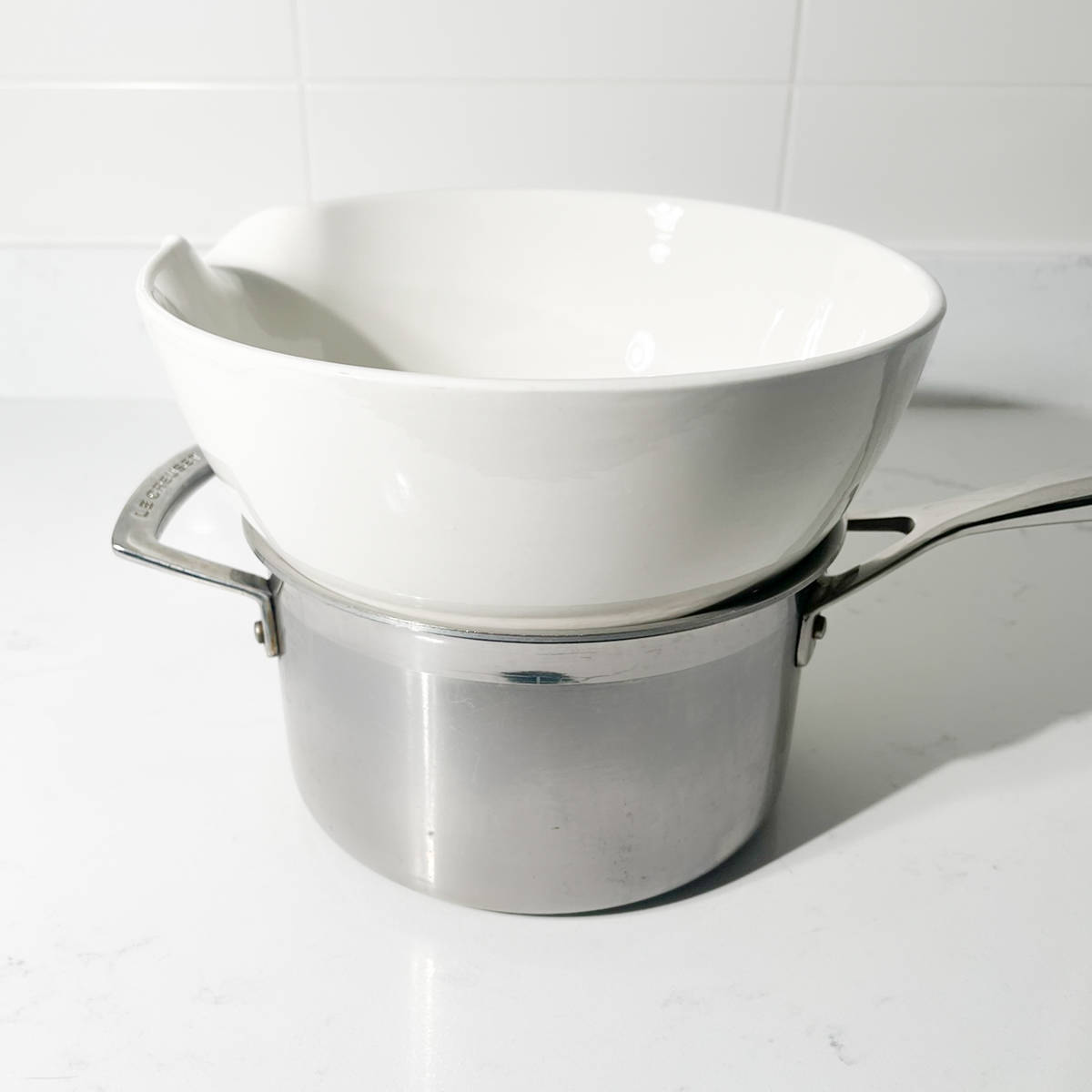
- Fill a saucepan with at least 5cm/2" of boiling water. Place a bowl on top of the saucepan, ensuring the bottom of the bowl does not touch the water. Alternatively, if you have a double boiler, use that.
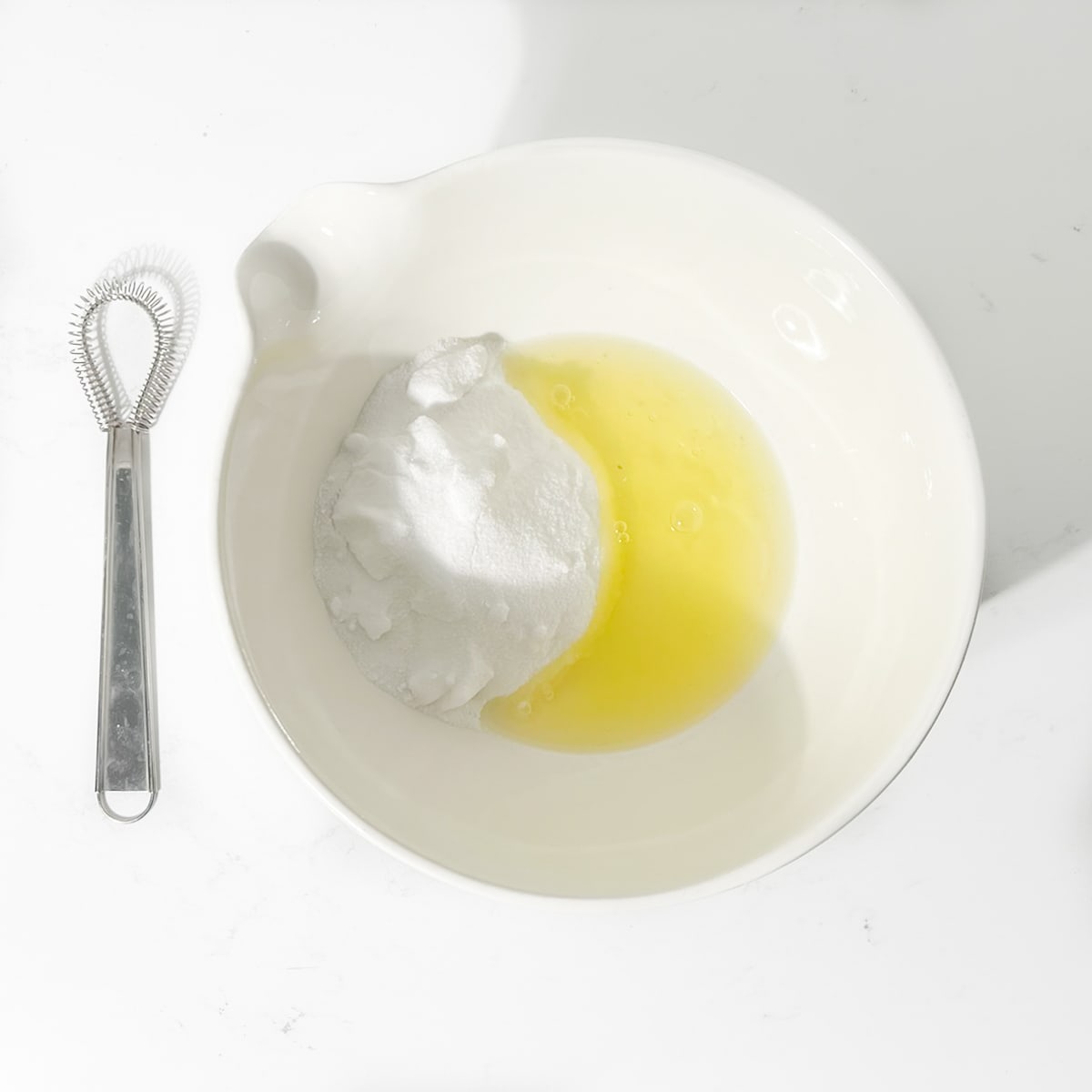
- Add the caster sugar and egg whites to the bowl. Make sure you have a hand whisk ready.
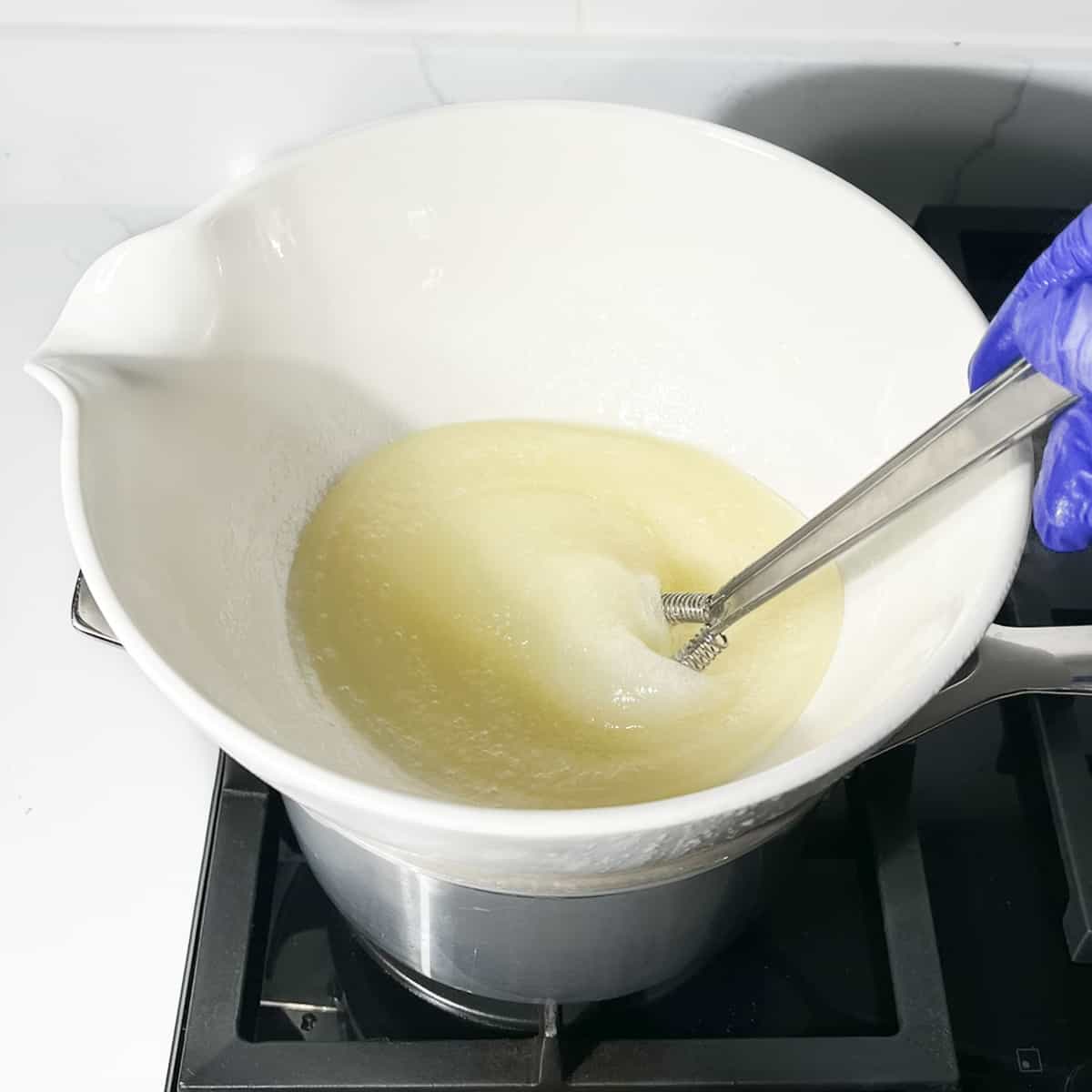
- Over medium heat, whisk the egg white and sugar mixture continuously until all the sugar has melted. Expect the mixture to become very foamy as it heats up.

- To check if the sugar has melted, quickly dip your fingertips into the mixture and feel for any graininess. Alternatively, if you have an instant-read thermometer, the temperature should read around 71C/160F.
Typically, this process takes around 5 minutes.
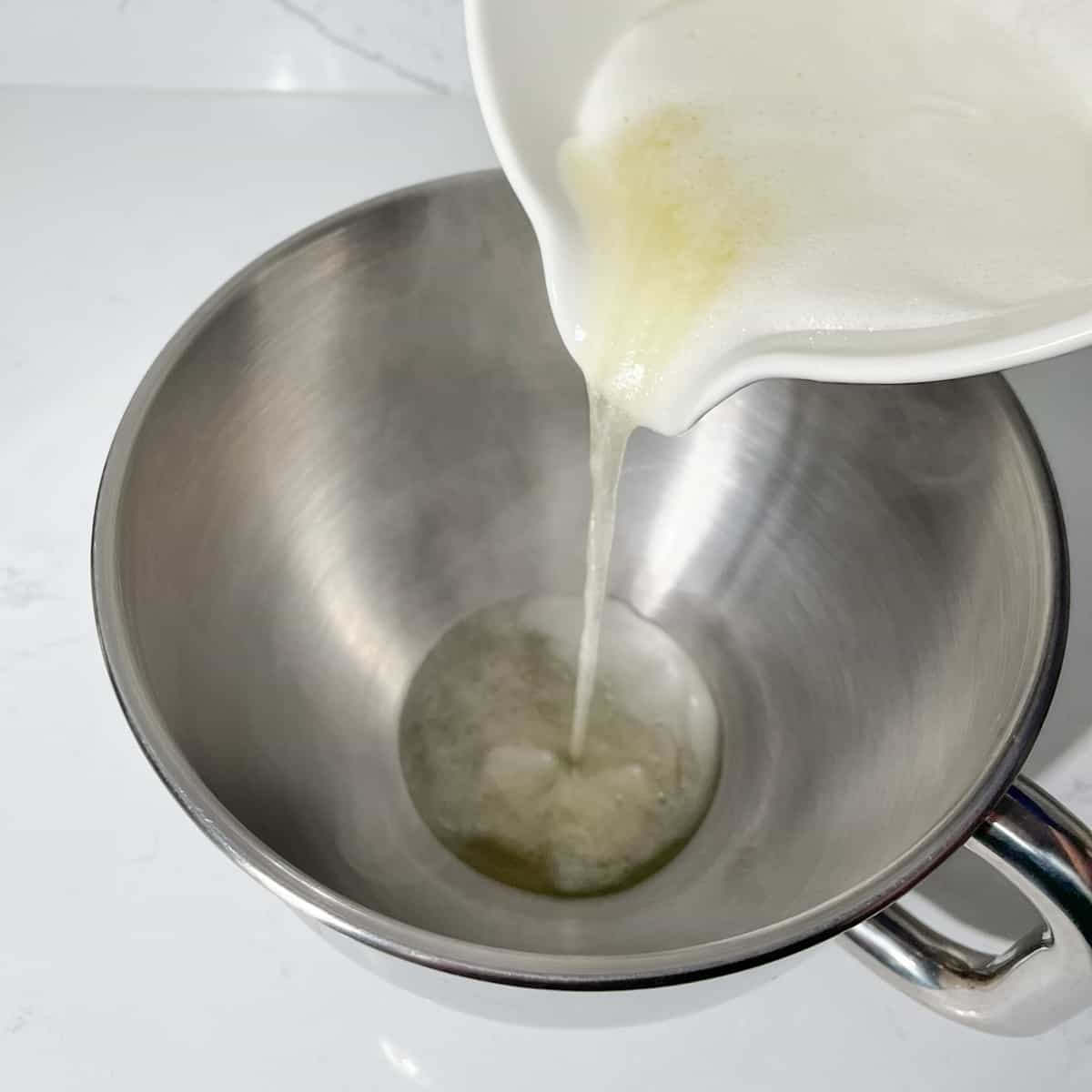
- Transfer the hot egg and sugar mixture to the grease-free bowl of a stand mixer. If you're using an electric hand mixer, transfer the mixture to a grease-free, large mixing bowl.

- Beat the meringue mixture on medium-high speed for 1-1.5 minutes until it starts to build a little volume. Then, add the cream of tartar, vanilla extract and a generous pinch of salt.
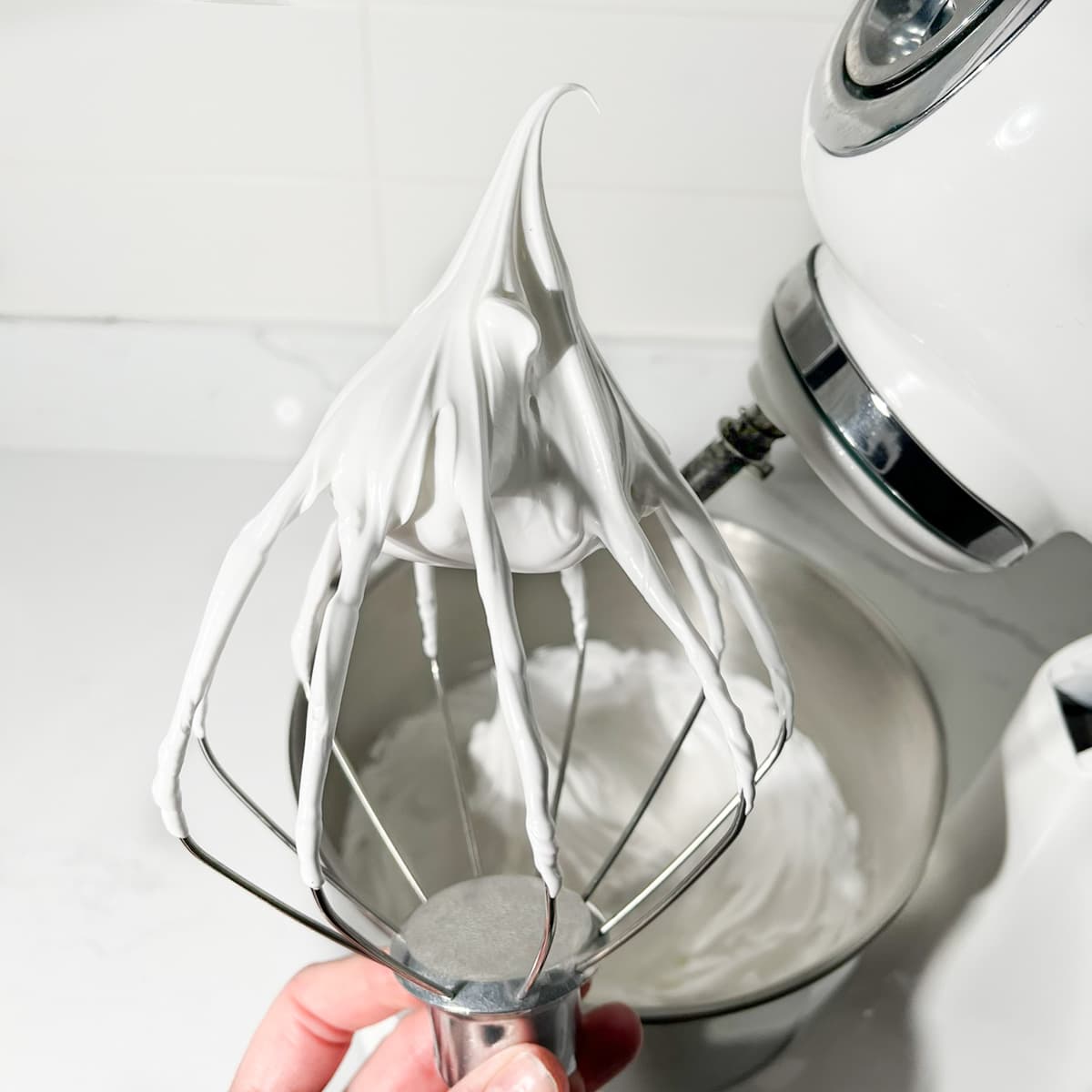
- Continue beating until the meringue turns pure white with glossy, stiff peaks that hold their shape. Stop as soon as you reach this stage as overbeating might cause graininess.
It should take approximately 3-4 minutes with a stand mixer on medium-high speed and a little longer with an electric hand mixer.
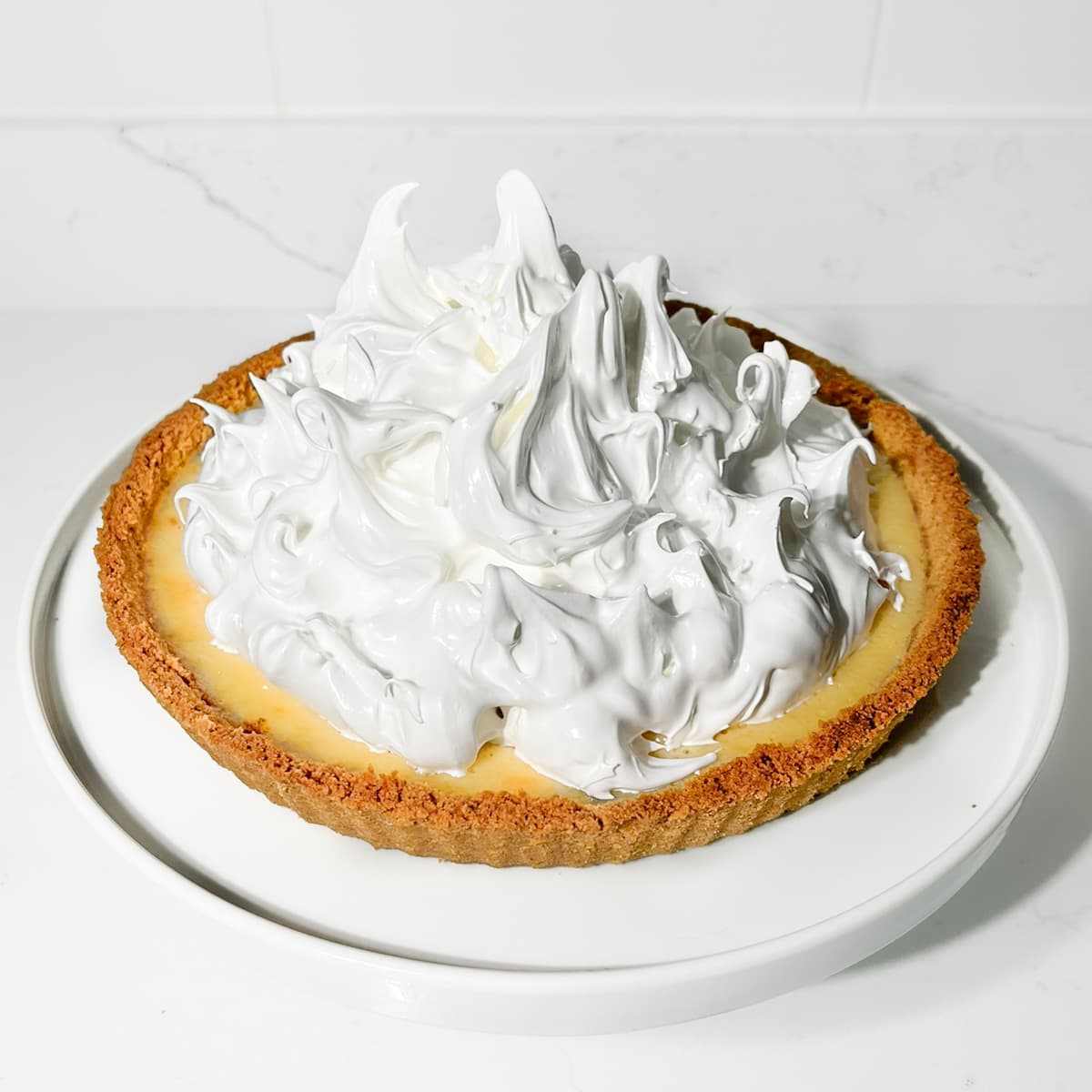
- If the meringue still feels a little warm, let it cool on its own for about 10 minutes. Spoon generous, billowing meringue clouds on top of the pie for a more rustic finish or use a piping bag for something fancier.
- Use a kitchen blow torch to caramelise the tips and bulges of the meringue or briefly place the pie under the broiler in the oven, making sure it's not too close to the element. Keep a very watchful eye on it!
Variations
- Swap the lemon juice and zest with lime juice and zest.
- Try a biscuit base with Scottish shortbread biscuits or ginger nut cookies.
- Add a spoonful or two of desiccated coconut to the cookie crumbs. Use slightly more butter to bind the base.
- Garnish with mint leaves.
- Drizzle passionfruit syrup or puree over the meringue.
- Use an Italian meringue instead of Swiss Meringue.
Serving Suggestions
- Serve Lemon Meringue Pie chilled for the perfect texture.
- Serve with a dollop of whipped cream.
- Sprinkle with lemon zest.
- Add a touch of elegance by dusting a light sprinkle of powdered sugar on top.
Storage and Freezing
Storage
For optimal freshness, store your Lemon Meringue Pie in the fridge. Cover it securely with plastic wrap or place it in an airtight container. Stored properly, it should remain fresh for up to 2-3 days.
Remember that the meringue may soften over time and develop some weeping and beading. It won't affect the taste, but it's best served freshly made if you're worried about appearance.
Freezing
When freezing a Lemon Meringue Pie, do so without the meringue on top. The meringue tends to weep when frozen, affecting its texture.
Wrap the pie tightly in plastic wrap and aluminium foil before placing it in the freezer. For the best taste and texture, it's advisable to freeze the pie for no more than 2-3 months.
Thaw the pie in the fridge before preparing a fresh batch of meringue to adorn the tart.
More desserts using condensed milk
Recipe

Biscuit Base Lemon Meringue Pie
Equipment
- 1 23cm/9" pie dish/fluted tart tin
- 1 saucepan
- 1 bowl that can sit on top of the saucepan
Ingredients
For the base
- 250 grams (9 oz) digestives biscuits/graham crackers - or other plain biscuits/cookies
- 100 grams (1 US stick) unsalted butter, melted
For the filling
- 4 egg yolks - use large eggs at room temperature
- 400 grams (14 oz) condensed milk - usually 1 tin
- 120 millilitre (½ US cup) fresh lemon juice
- zest from one lemon - based on a small-medium lemon
For the meringue topping
- 220 grams (8 oz) white caster sugar - or granulated white sugar
- 4 egg whites - use large eggs at room temperature
- ½ teaspoon cream of tartar
- 1 teaspoon vanilla extract
- ¼ teaspoon salt - or a good pinch
Instructions
- Preheat the oven to 180C/350F.
Making the biscuit base
- Add the biscuits into the bowl of a food processor bowl and whizz until you get fine crumbs. Alternatively, throw the biscuits into a sturdy plastic bag and give them a good bashing with a rolling pin.250 grams (9 oz) digestives biscuits/graham crackers
- Melt the butter in the microwave or a small saucepan on the stove. Pour it over the biscuit crumbs and mix until well combined, ensuring all the crumbs are coated with butter.100 grams (1 US stick) unsalted butter, melted
- Transfer the crumb mixture into a tart tin or pie dish, approximately 23cm/9" in diameter.
- Press the crumbs firmly into the dish, ensuring they cover the bottom and reach up the sides of the tin. Use the back of a spoon or the bottom of a glass to compact the crumbs firmly in the dish.
- Place the prepared tart base in the fridge until needed.
Making the lemon filling
- Separate the eggs, being careful not to let any traces of egg yolk into the egg whites.
- In a large bowl, combine the egg yolks, condensed milk, lemon juice and lemon zest.4 egg yolks, 400 grams (14 oz) condensed milk, 120 millilitre (½ US cup) fresh lemon juice, zest from one lemon
- Whisk the mixture thoroughly using an electric hand mixer or a hand whisk until fully incorporated, approximately 1-2 minutes. The condensed milk will slightly thicken due to the lemon juice.
- Gently pour the lemon filling into the tart base and tilt the tin from side to side to level it.
- Bake the pie in the preheated oven for 20-25 minutes, or until the sides are firm and there is only a very slight wobble in the middle. Be careful not to underbake, as the tart may not set firm enough.
- Let the pie cool, then transfer it to the fridge to fully set and chill for at least 4-6 hours, or overnight.
Making the Swiss meringue
- Attach the whisk attachment to a stand mixer or an electric hand mixer.
- Fill a saucepan with at least 5cm/2" of boiling water. Place a bowl on top of the saucepan, ensuring the bottom of the bowl does not touch the water. Alternatively, if you have a double boiler, use that.
- Add the caster sugar and egg whites to the bowl. Make sure you have a hand whisk ready.4 egg whites, 220 grams (8 oz) white caster sugar
- Over medium heat, whisk the egg white and sugar mixture continuously until all the sugar has melted. Expect the mixture to become very foamy as it heats up.
- To check if the sugar has melted, quickly dip your fingertips into the mixture and feel for any graininess. Alternatively, if you have an instant-read thermometer, the temperature should read around 71C/160F.Typically, this process takes around 5 minutes.
- Transfer the hot egg and sugar mixture to the grease-free bowl of a stand mixer. If you're using an electric hand mixer, transfer the mixture to a large, grease-free bowl.
- Beat the meringue mixture on medium-high speed for 1-1½ minutes until it starts to build a little volume. Then, add the cream of tartar, vanilla extract and a generous pinch of salt.½ teaspoon cream of tartar, 1 teaspoon vanilla extract, ¼ teaspoon salt
- Continue beating until the meringue turns pure white with stiff, glossy peaks that hold their shape. Stop as soon as you reach this stage as overbeating might cause graininess. It should take approximately 3-4 minutes with a stand mixer on medium-high speed and a little longer with an electric hand mixer.
- If the meringue still feels a little warm, let it cool on its own for about 10 minutes. Spoon generous, billowing clouds of meringue on top of the lemon filling, or use a piping bag.
- Use a kitchen torch to caramelise the tips and bulges of the meringue or briefly place the pie under the broiler in the oven, making sure it's not too close to the element. Keep a very watchful eye on it!
**Nutritional data disclaimer**
Please keep in mind that the nutritional information provided below is calculated by a third party and we cannot guarantee the accuracy. We try our best to give you the most accurate information, but we do not take responsibility for errors that may be present. Also, the nutritional value of the recipe may change depending on the exact brands and products used. We recommend that you consult with a qualified healthcare professional or registered dietitian for personalised advice on your dietary needs.
Nutrition
For food safety advice, including guidance on food allergies



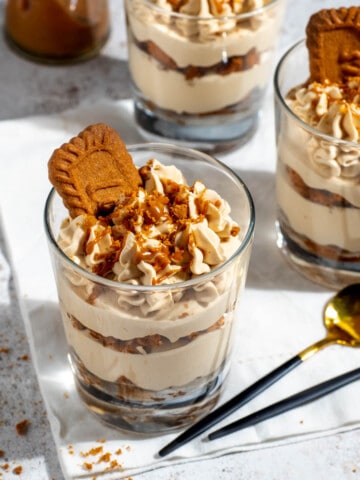

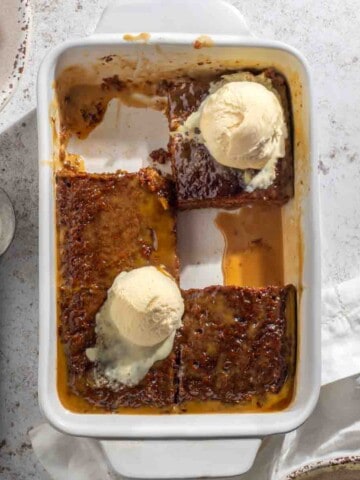
Leave a Reply